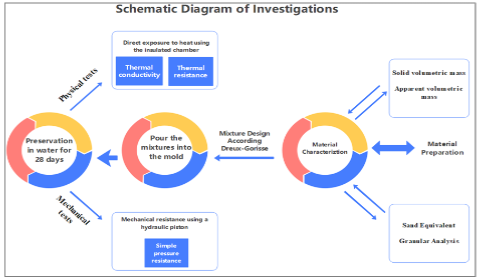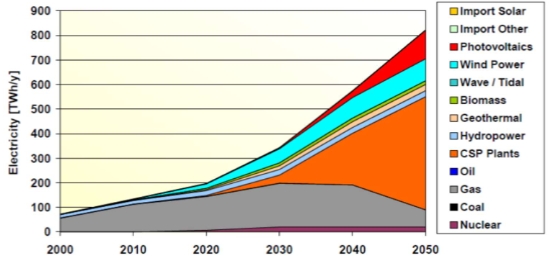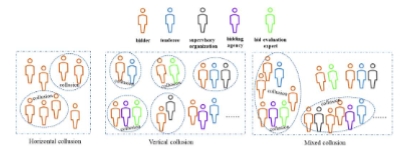Evaluation of the response of historical structures fitted with seismic-isolation
Abstract
The paper highlights the performance of the seismic isolation devices installed on retrofitted buildings in reducing the seismic response when subjected to earthquakes. Two buildings from the beginning of the XXth century in Bucharest are chosen from many more, monitored over the city area. We discuss the response of these base-seismic isolated structures, relying on good quality data acquired from the recent strong earthquake (3 November 2022, MW = 5.0). Elastic response spectra computed from recordings at two levels of each structure are used, placed under and right above the isolating layer. At one building, the existence of previous recordings and the particularity of the sensors allow a comparison with the other two relatively recent medium-intensity earthquakes. The assessment is carried out in terms of maximum acceleration amax, measured at certain levels in each structure, spectral acceleration amplitude SAmax, and spectral-peak corresponding period. We find that the base-isolation methodology is effective in reducing the response of the building right above the isolating layer, an observation valid for both structures, all components of the recordings, and spectral acceleration values. Moreover, the outcomes from the modal evaluation performed prior to rehabilitation and the seismic isolation process are presented by pointing out a higher newly acquired fundamental period of the isolated structures.
References
[1]Aldea A, Demetriu S, Albota E, et al. Instrumental response of buildings. Studies within JICA project in Romania. In: Proceedings of the International Symposium on Seismic Risk Reduction. 26-27 April 2007; Bucharest, Romania. pp. 157-170.
[2]Balan SF, Tiganescu A, Apostol BF et al. Post-earthquake warning for Vrancea seismic source based on code spectral acceleration exceedance. Earthquakes and Structures. 2019; 17(4): 365-372. doi: 10.12989/eas.2019.17.4.365.
[3]Apostol BF, Balan SF, Danet A. Post-Earthquake Assessment for Seismic Risk Mitigation in Romania: Case-Studies Based on Recorded Data. Romanian Journal of Physics. 2023; 68(7-8): 804-804. doi: 10.59277/romjphys.2023.68.804
[4]Demetriu S, Borcia IS, Seismic Response of Instrumented Buildings during Vrancea Earthquakes. Bulletin of the Technical University of Civil Engineering, Structural Mechanics and Structural Engineering. 2001; 2: 1-11.
[5]Balan SF, Apostol BF, Tiganescu A. Soil Conditions and Structural Typologies for Seismic Isolation of Buildings, in Cities Exposed to Strong Earthquakes Hazard. Scientific Papers. Series E. Land Reclamation, Earth Observation & Surveying, Environmental Engineering. 2021; 10: 128-134.
[6]Tiganescu A, Toma-Danila D, Grecu B, et al. Current status and perspectives on seismic monitoring of structures and rapid seismic loss estimation in Romania. 1st Croatian Conference on Earthquake Engineering; 22-24 March 2021; Online Conference. doi: 10.5592/co/1crocee.2021.120
[7]Tiganescu A, Craifaleanu IG, Aldea A, et al. Evolution, Recent Progress and Perspectives of the Seismic Monitoring of Building Structures in Romania. Frontiers in Earth Science. 2022; 10. doi: 10.3389/feart.2022.819153
[8]National Institute of Research and Development for Earth Physics. Internal Seismic Report. National Institute of Research and Development for Earth Physics; 2022.
[9]Balan SF, Apostol BF, Danet A. Efficacy of the Seismic Isolating Systems for Historical Buildings under Moderate Seismic Forces. Land Reclamation, Earth Observation & Surveying, Environmental Engineering; 2024.
[10]NCh 2745. Analysis and Design of Buildings with Seismic Insulation. Chilean Association of Seismology and Earthquake Engineering. National Institute for Standardization; 2013.
[11]BSL. The Building Standard Law of Japan. Ministry of Land, Infrastructure, Transport and Tourism, Tokyo, Japan; 2009.
[12]EN 1998-1. Eurocode 8: Design of structures for earthquake resistance-Part 1: General rules, seismic actions and rules for buildings. European Committee for Standardization; 2005.
[13]AASHTO. Guide Specifications for Seismic Isolation Design. American Association of State Highway and Transportation Officials; 1999.
[14]ASCE standard (American Society of Civil Engineers). ASCE/SEI 7-10. Minimum Design Loads for Buildings and Other Structures. ASCE standard (American Society of Civil Engineers); 2010. pp. 7-16.
[15]NTC. Ministero Delle Infrastrutture. NTC; 2008.
[16]GB 50011. National Standard of the People’s Republic of China. China Architecture & Building Press; 2010.
[17]Ministry of Construction and Housing and Communal Services Russian Federation. S. P. 14. Construction in Seismic Areas (Russia). Ministry of Construction and Housing and Communal Services Russian Federation; 2014.
[18]Pietra D, Pampanin S, Mayes RL, et al. Design of base-isolated buildings. Bulletin of the New Zealand Society for Earthquake Engineering. 2015; 48(2): 118-135. doi: 10.5459/bnzsee.48.2.118-135
[19]Yenidogan C, Erdik M. A comparative evaluation of design provisions for seismically isolated buildings. Soil Dynamics and Earthquake Engineering. 2016; 90: 265-286. doi: 10.1016/j.soildyn.2016.08.016
[20]Taniguchi T, Der Kiureghian A, Melkumyan M. Effect of tuned mass damper on displacement demand of base-isolated structures. Engineering Structures. 2008; 30(12): 3478-3488. doi: 10.1016/j.engstruct.2008.05.027
[21]Bratosin D, Apostol BF, and Balan SF. Avoidance strategy for soil-structure resonance by considering nonlinear behavior of the site materials. Romanian Journal of Physics. 2017; 62(808): 5-6.
[22]Apostol BF. A resonant coupling of a localized harmonic oscillator to an elastic medium. Romanian Reports in Physics. 2017; 69: 116.
[23]Liu T, Zordan T, Briseghella B, et al. An improved equivalent linear model of seismic isolation system with bilinear behavior. Engineering Structures. 2014; 61: 113-126. doi: 10.1016/j.engstruct.2014.01.013
[24]Syed IA. Simplified design guidelines for seismic base isolation in multi-story buildings for Bangladesh National Building Code (BNBC). International Journal of the Physical Sciences. 2011; 6(23): 5467-5486. doi:10.5897/IJPS11.795
[25]Ye K, Xiao Y, Hu L. A direct displacement-based design procedure for base-isolated building structures with lead rubber bearings (LRBs). Engineering Structures. 2019; 197: 109402. doi: 10.1016/j.engstruct.2019.109402
[26]De Domenico D, Ricciardi G, Takewaki I. Design strategies of viscous dampers for seismic protection of building structures: A review. Soil Dynamics and Earthquake Engineering. 2019; 118: 144-165. doi: 10.1016/j.soildyn.2018.12.024
[27]Bratosin D. Nonlinear restraints in seismic isolation of buildings. Proceedings of the Romanian Academy-Series A: Mathematics, Physics, Technical Sciences, Information Science. 2008; 9(3): 1-7.
[28]Bratosin D, Sireteanu T. Hysteretic damping modeling by nonlinear Kelvin-Voigt model. Proceedings of the Romanian Academy, Series A: Mathematics, Physics, Technical Sciences, Information Science. 2002; 3: 99-104.
[29]Iordachescu A, Iordachescu E. Rehabilitation of Town Hall Building of Bucharest through the Seismic Isolation Method. Revista Construcții. 2007; 6: 6-10.
[30]Ministry of Transport, Construction and Tourism (M.T.C.T). P 100-1/2006. Seismic Design Code-Part I: Earthquake Resistant Design of Buildings. Ministry of Transport, Construction and Tourism (M.T.C.T); 2006.
[31]Marmureanu GH, Iordachescu A, Iordachescu E, et al. A Study on Seismic Equipment Instrumentation of the Academy of Economic Science-Victor Slavescu (ASE) Building Retrofitted through Base-Isolating Method. Designer European Business Consult; General Designer: European Business Consult, Expertise Designer: S.C. Proescom Srl. and National Institute for Earth Physics; 2009.
[32]Cristian Neagoe, Liviu Marius Manea, Constantin Ionescu. Romanian complex data center for dense seismic network. Annals of Geophysics. 2011; 54(1). doi: 10.4401/ag-4809
[33]Romplus. Romanian earthquake catalogue. National Institute for Earth Physics, Magurele, Romania. 2023. Available online: www.infp.ro/romplus. (accessed on 10 January 2024).
[34]National Institute of Research and Development for Earth Physics. Internal Seismic Report. National Institute of Research and Development for Earth Physics; 2018.
[35]National Institute of Research and Development for Earth Physics. Internal Seismic Reports. National Institute of Research and Development for Earth Physics; 2020.
[36]BRTT-Boulder Real Time Technologies. Available online: https://brtt.com/ (accessed on 2 January 2024).
[37]Luco JE. Effects of soil–structure interaction on seismic base isolation. Soil Dynamics and Earthquake Engineering. 2014; 66: 167-177. doi: 10.1016/j.soildyn.2014.05.007
[38]Miranda CJ. Revisiting seismic isolation from a modal energy perspective. Proceedings of the Romanian Academy. 2006; 7(1): 55-64.
[39]Spyrakos CC, Koutromanos IA, Maniatakis ChA. Seismic response of base-isolated buildings including soil–structure interaction. Soil Dynamics and Earthquake Engineering. 2009; 29(4): 658-668. doi: 10.1016/j.soildyn.2008.07.002
[40]Yenidogan C. Earthquake-Resilient Design of Seismically Isolated Buildings: A Review of Technology. Vibration. 2021; 4(3): 602-647. doi: 10.3390/vibration4030035
[41]Pérez-Rocha LE, Avilés-López J, Tena-Colunga A. Base isolation for mid-rise buildings in presence of soil-structure interaction. Soil Dynamics and Earthquake Engineering. 2021; 151: 106980. doi: 10.1016/j.soildyn.2021.106980
[42]Marmureanu G. Certainties/Uncertainties in Vrancea hazard and seismic risk evaluation. Romanian Academy Publishing House; 2016.
[43]Marmureanu G, Balan FS, Marmureanu A. Larger peak ground accelerations in extra-Carpathian area than in epicenter. Available online: https://meetingorganizer.copernicus.org/EGU2020/EGU2020-7215.html?pdf (accessed on 3 January 2024).
[44]Mărmureanu A, Ionescu C, Grecu B, et al. From National to Transnational Seismic Monitoring Products and Services in the Republic of Bulgaria, Republic of Moldova, Romania, and Ukraine. Seismological Research Letters. 2021; 92(3): 1685-1703. doi: 10.1785/0220200393
[45]Ministry of Regional Development and Public Administration (M.D.R.A.P.). P 100-1/2013; Seismic Design Code-Part I: Earthquake Resistant Design of Buildings. Ministry of Regional Development and Public Administration (M.D.R.A.P.); 2013.
[46]Mândrescu N, Radulian M, Mărmureanu Gh. Geological, geophysical and seismological criteria for local response evaluation in Bucharest urban area. Soil Dynamics and Earthquake Engineering. 2007; 27(4): 367-393. doi: 10.1016/j.soildyn.2006.06.010
[47]Mandrescu N, Radulian M, and Marmureanu G. Microzonation of Bucharest: Geology of the Deep Cohesionless Deposits and Predominant Period of Motion. Revue Roumain de Geophysique. 2004; 48: 120-1.
[48]Wenzel F, Lungu D, Novak O, et al. Vrancea Earthquakes: Tectonics, Hazard and Risk Mitigation. Springer Netherlands; 1999. doi: 10.1007/978-94-011-4748-4
Copyright (c) 2024 Bogdan Felix Apostol, Stefan Florin Balan

This work is licensed under a Creative Commons Attribution 4.0 International License.












